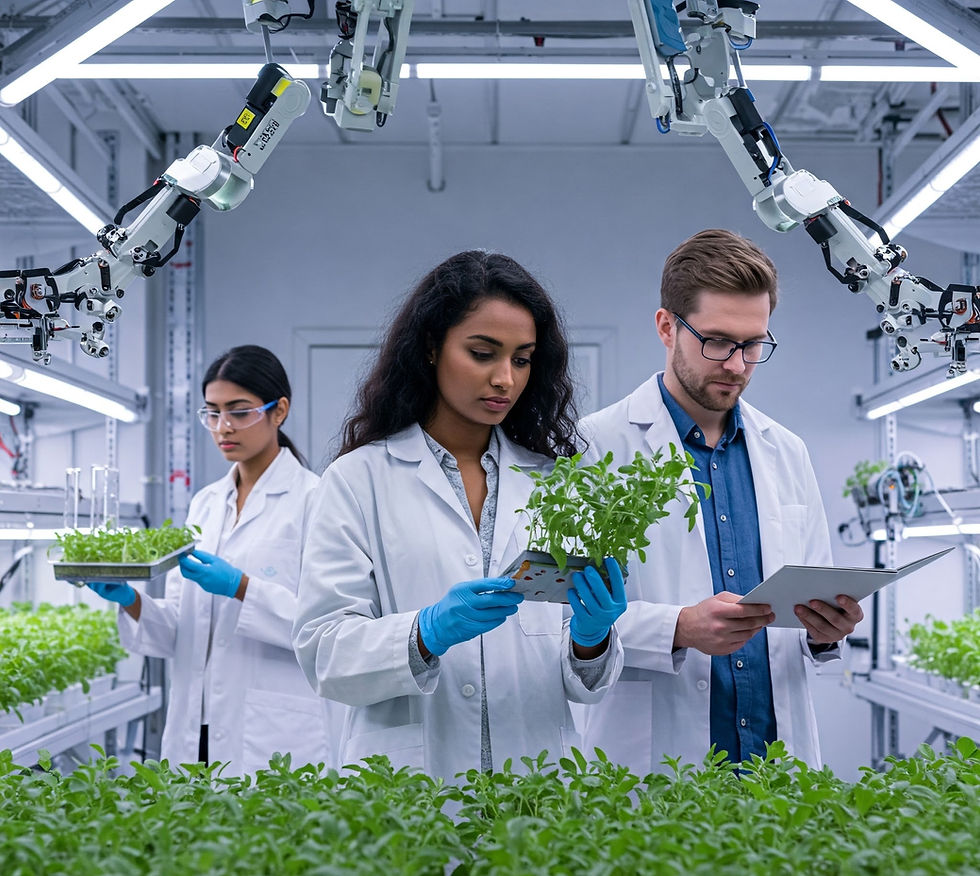Challenges of Conventional Thermal Imaging in Agricultural Applications
- Professor Balthazar

- Sep 15, 2019
- 2 min read
Updated: Mar 28, 2024
In agriculture, we often use expensive hardware to conduct thermal imagery, and expensive software to process and analyze capture images. This is carried out by an expert in image processing & computer vision. But, what if we do not have the money to invest on expensive hardware & software, required expertise to analyze the images or access to an expert to do it for us?
How to identify plants in thermal image
In many agricultural applications, we need to identify specific target (e.g. leaves) in the thermal image. In order to do that we need to remove the unwanted background (e.g. soil, water, artificial objects). In the conventional thermal imaging, however, there is no standard way to that and researchers often need to improvise.
Solution: One effective way is to combine thermal imagery with another type of imaging (e.g. visible, multispectral).
Unavailability of reliable, inexpensive hardware for agricultural applications
Almost all commercially available thermal cameras are all designed for non-agricultural applications and despite their high price are often unable to meet simple expectations of the agricultural community.
Solution: A thermal imaging system developed and optimized for agricultural applications can significantly reduce the expenses and save the hassle.
Manual, time-consuming, complicated image processing
At their best and at any price range, commercial thermal cameras can only provide unprocessed thermal images. Sometimes these thermal images are accompanied with RGB images as well. To extract useful data, these images need to be analyzed using a software. However, convenient software packages are expensive. In addition, most people in agriculture are not familiar with image processing basics.
Solution: A software package optimized for agricultural applications can minimize the required level of expertise, and save time and money.
Big Data problem
Most of us think of 'big data' as a good thing; something that keeps data scientists busy and customers happy. The reality is, however, most growers do not appreciate the large amount of data (especially in from of high resolution images) that is thrown at them. Companies often provide unprocessed images along with a software package and leave it to the user to make sense of the images. The images are usually taken by drones or satellites, and due to their large size, it takes forever to extract useful information from them.
Solution: Automation and image processing on-board thermal imaging system can provide the user with only information that they need, and on-time to use in decision-making.
BINA Pro (DurUntash Lab, San Diego, CA) is a handheld multi-sensor crop monitoring unit optimized for agricultural applications. This computer vision-based system combines thermal and multispectral imagery and pulls data from a microclimate unit to calculate a variety of useful plant parameters. BINA Pro can display different image layers in real-time such as plant surface temperature, NDVI, CWSI, actual transpiration and stomatal conductance. Three image layers can be chosen and overlaid. It stores raw & processed images, and exports resulting data in ‘csv’ format with the click of a button. The target can be as small as part of a leaf, a number of leaves or entire canopy. Please continue reading about BINA Pro here: BINA Pro: Multi-Sensor Crop Monitoring Unit





Comments